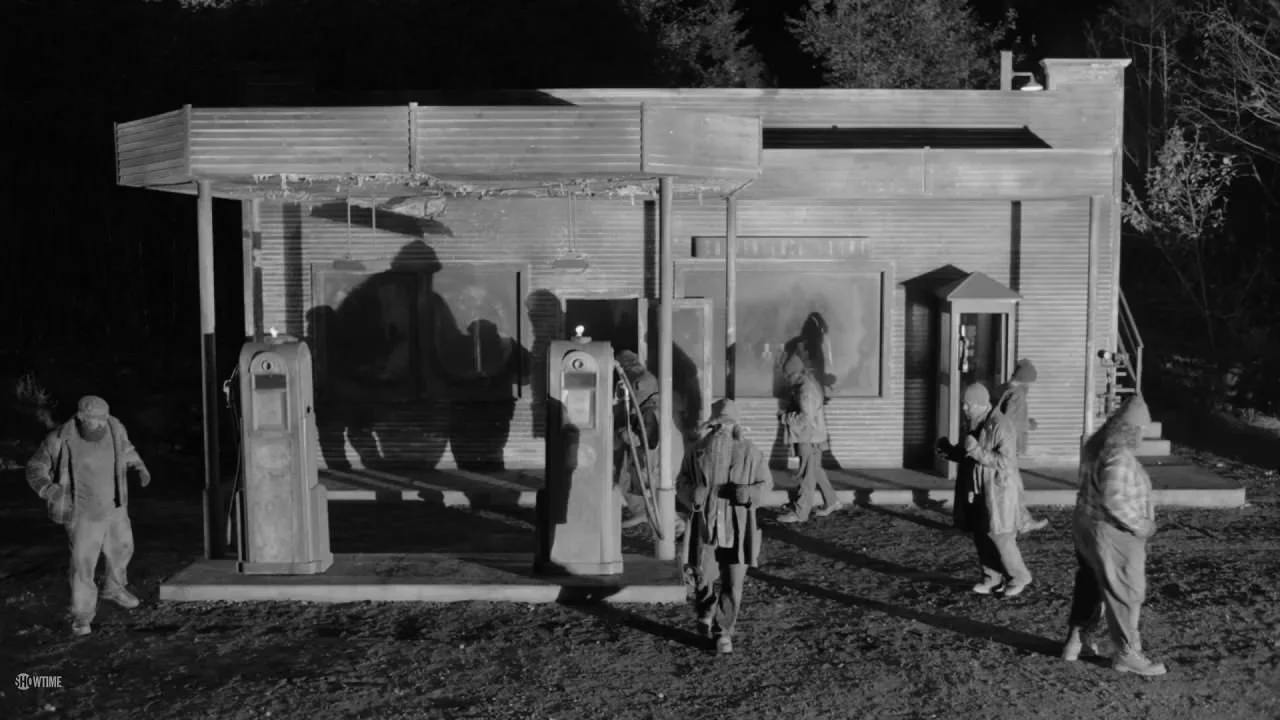…Did you hear that: Horror Sound Design
At Syren Studios, one of our favourite genres to work on is horror. We've carried out post production audio for horror fiction, animation, and even theatre. It's one of those genres where almost every decision is a creative one, including having scenes with no sound at all. In fact, one of my favourite horror film sound designs of all time is for John Krasinski’s A Quiet Place, where each footstep from the silent characters speaks volumes.
Last year, Izzy did the sound design for the short film Flesh of My Flesh, a post-apocalyptic horror drama, following a Tom and his young sister Violet, surviving in the wake of a devastating global famine. With the arrival of a stranger, Tom must face the cost of maintaining the illusion of their lives. I couldn't write this blog without asking her about her experience making creative choices for the sound, including her inspirations. She speaks about having to totally reimagine the texture of rural sounds, because in this post-apocalyptic landscape, almost all animal life and a growing number of plant species have been rendered extinct. She not only looked at other sound designers' work, such as Alien Covenant's unnervingly desolate natural atmospheric design, but also did some environmental research into natural biophonies.




It may feel as though academic research wouldn't lead to creative ideas, but this is a misconception. Often, you can read something factual and have a lightbulb moment on how you are going to approach a certain scene. From Izzy's research, she was inspired to use creaking, rustling trees, breezes blowing through dry grass, and different wind textures in the open field in order to accentuate the lack of expected animal textures, such as insects humming or layers of birdsong. Another film inspiration for Flesh of My Flesh's sound was the use of silence in Scorsese's Raging Bull: ‘at the peak of tension during a boxing match, all sound is sucked away, allowing the moment to hang in the air until the scene’s frenzied diegetic soundscape slams back in’.
When Izzy and myself were tasked with the post production audio for Melomaniac, another horror short film, we decided to also use silence to increase the tension when a strange apparition makes appearances. This film features a threat that is supernatural, in the form of the ghost, which was a very interesting element to sound design. We were inspired by the nightmarish textures and surreal settings in Lynch's Eraserhead and Twin Peaks, and the incredible layers of SFX used to personify the house setting in Aronofsky’s Mothter!.
We explored physical elements of Melomaniac's rural, dilapidated house, such as the hum of the fridge, the low buzz of the television, and the dripping of leaking rainwater, that could each in turn be exaggerated or removed from the atmospheric sound to create both tension and the feeling that the house itself is an active, haunting presence within the film. We always push the reverb on these effects to add that extra layer of creepiness! During moments in which the ghost is present, we wanted to create a big juxtaposition between the silence and abrasive accompanying sound, so we got really creative with our metal work, grabbing an old guitar and all the metal utensils from the kitchen and recording nasty, discordant scrapes, which were then combined with plenty of distorted sound effects. This reel shows some of what we ended up with!
My experience designing animation is a little different to fiction, as it is starting from a completely blank slate. My work on Arachnarche, a short, horror animation, was very foley heavy and also had a lot of score to help transport the film along. For stop motion, I think it's really important to create most of your effects with foley, as there's a very handmade element to it and often sound effect libraries just don't quite have the aesthetic touch you need. To help create the spider effects, Apple earphones, steel wool, and fingernails on a desk were used... you'd be surprised what you can find to make the right sounds when you look hard enough! The spider web sounds were created using cotton wool and other soft layering, such as clothes. Layering several different textures also creates such a dimensional and realistic design.
When creating horror through sound design, the best advice the two of us can give is:
play with silence
grab a book and do some academic research
don't be afraid to take inspiration from other films
use plenty of reverb
record lots and lots of foley
Happy Halloween,
Amy and Izzy







